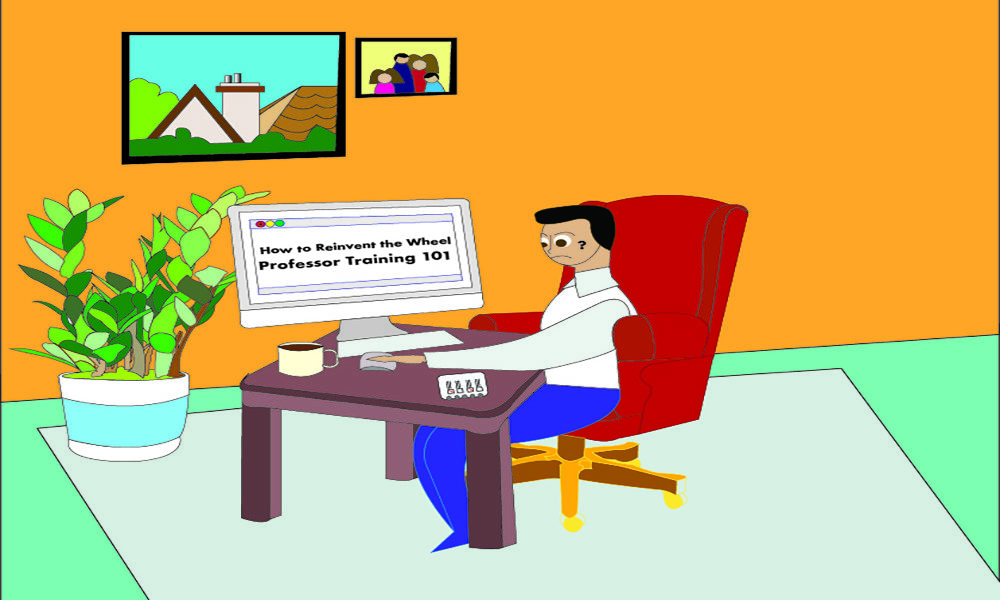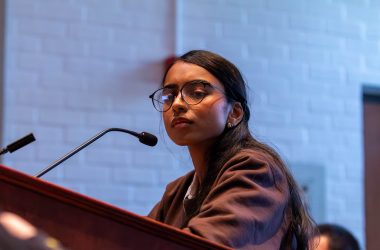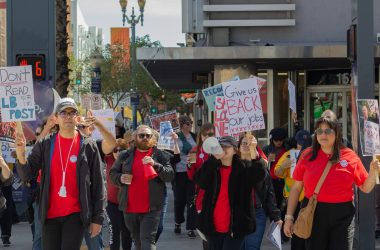By Nikki Nelsen & Kevin Chittum
As Long Beach State finishes its first fully remote semester and officials prepare for another cohort of professor training, professors have been expressing mixed reviews of online instruction.
While some instructors benefited from virtual teaching, Edgar Kasala, a political science professor, said he thought the training looked unproductive and “cutesy,” though he only reviewed the free university-offered training sessions.
“There’s this one woman who was talking about how to be more personable with her students. She put up a little funny cat video to introduce herself,” Kasala said. “Yeah, I’m going to put up a cat video. Right. I wasn’t impressed.”
Adam Moore, an assistant professor for the Department of Film and Electronic Arts, said he felt the training was beneficial and that it helped him completely change his teaching style to adapt to the virtual learning environment.
“I did approximately 30 to 40 hours of professional development this summer to learn how to enhance student engagement in online courses,” Moore said. “As a result of this, I tossed out my entire curriculum and started over from a blank page.”
Although Moore updated his courses to fit into the Zoom model, he said he believes virtual lectures are not the best method for students to learn from as they are “hard to sit through.” He feels Zoom is better suited for helping students workshop their assignments.
“My courses now involve much more learning outside of class,” Moore said. “For example, students are assigned to watch Masterclass videos on specific writing topics, and they can watch them at a time that fits into their schedule.”
Chris Lowe, Shark Lab director and professor of marine biology, said he is also struggling to teach labs virtually as “it’s hard to learn a lot of science or even engineering without doing the hands-on part.”
“You cannot learn it from a video monitor,” Lowe said. “You really have to do it.”
While some professors have found difficulty adjusting, other professors have been making use of skills they learned over the summer.
Moore said he was paid for the Academic Technology Services training, which used funds from the $2.2 trillion Coronavirus Aid, Relief and Economic Security Act signed in by the Trump administration in late March.
Sheryll Hathaway, director of Instructional Technology Support Services, said about 550 professors out of 1,100 sign-ups completed the paid summer training.
The paid training will be starting over the upcoming winter break, which will use an extension of CARES Act funds distributed to the university.
According to Shariq Ahmed, associate vice president for Academic Technology Services, the training will prepare professors who have yet to complete the program and assist those who still feel they have more to learn.
“[The training] will be similar to what we had in the past with the online learning studio, where we’re going to offer some self-paced training for faculty,” Ahmed said. “We’ll also have a similar symposium as we did in summer, where faculty will have the opportunity to be led by experts in the field.”
The lecturer cohort has almost 900 professors whom ATS hopes to train this winter.
Professors were encouraged to seek assistance by reaching out to the IT Office, though many were left struggling in the late afternoon as it closed at 3 p.m. instead of the usual 5 p.m. for 12 weeks of the fall semester.
Sheryll Hathaway, director of Instructional Technology Support Services, said that due to coronavirus-imposed changes, the office was severely understaffed and was forced to cut its hours.
“We had to make a choice over the summer because, if you can imagine, everybody needed an instructional designer or an instructional technologist starting in spring,” Hathaway said. “So we shortened the hours because we had a two-thirds increase in consultations and requests for webinars and training.”
The successful training of four new instructional designers, who worked to improve student learning alongside CSULB instructors, allowed the office to rebound and once again offer support until 5 p.m. following the Thanksgiving holiday.
ATS now offers faculty around-the-clock virtual support services and a virtual chatbot, as virtual services were previously only available from 5 a.m. to 8 p.m.
As professors and lecturers have been struggling to adapt, CSULB students have expressed mixed feelings toward virtual learning. While some said they enjoyed the online format, many feel like their professors have not been giving them any leeway.
“I believe it takes more than the given class lecture time to upload our documents, take the tests and re-upload everything properly,” said Danika Gaslan, a first-year biology major.
Gaslan said she was not given much forgiveness and was told by her professor she “should just be able to handle it.”
Some students also said they feel it is a lot harder to learn online and conduct activities such as labs from home when only a limited number of courses were scheduled to meet face-to-face.
According to Jeff Cook, associate vice president of strategic communications at CSULB, 2.8% of all fall courses were held in person, or 272 of the 9,742 total course sections.
While the university has implemented resources to prepare educators and CSULB students, this does not benefit the ones who learn from experience.
“The material is much harder to learn. Not to mention labs are all but gone,” said Alexander Ubribe, a third-year engineering major. “Being a hands-on person, labs were where I learned the most.”
Students who work in the IT department have found difficulty troubleshooting engineering labs without being in person.
Parker Anderson, a fourth-year electrical engineering student, works as a tutor in the department and said that the most challenging part has been trying to assist students with their labs over Zoom.
“I can’t touch the circuits,” Anderson said. “It’s hard to guide someone through troubleshooting the circuit when you can’t physically point to the part where you want the student to check.”
Despite this, Anderson said that the training he received from the department was adequate in preparing him for what he would face as a tutor this semester.
“I think the training was really good. I started in September 2020, and I had a lot of good info from my department,” Anderson said.
Hathaway said that although she knew this fall would be challenging, she and her colleagues in IT continue to work toward optimizing training methods.
ATS held an “unconference” in November where instructors met virtually to discuss the semester, and Hathaway said many felt that there was “a reduction in the quality of education” caused by the coronavirus pandemic along with the stress put on professors to quickly transition to operating online.
“It’s a different environment. It’s hard to manage. There’s a lot of Zoom fatigue,” Hathaway said. “Everybody is doing their best. They’ve really tried to collaborate across the aisle, but it is difficult.”




